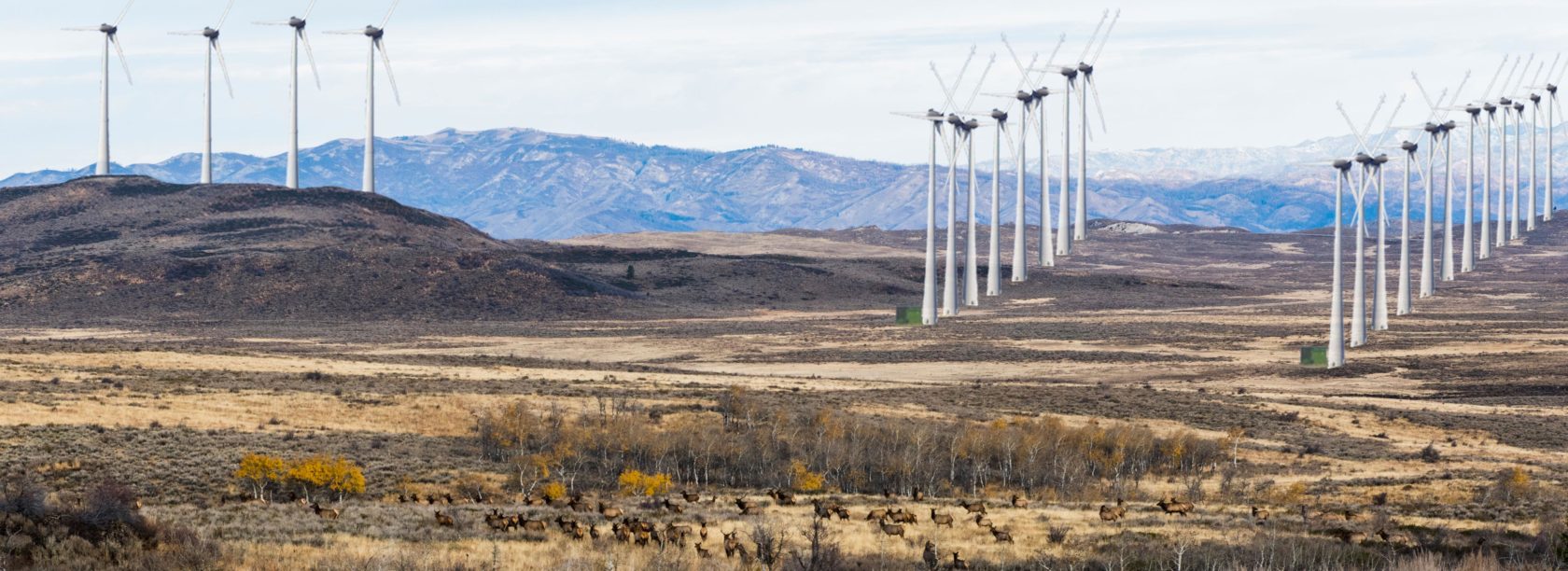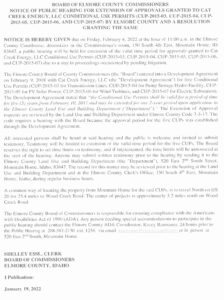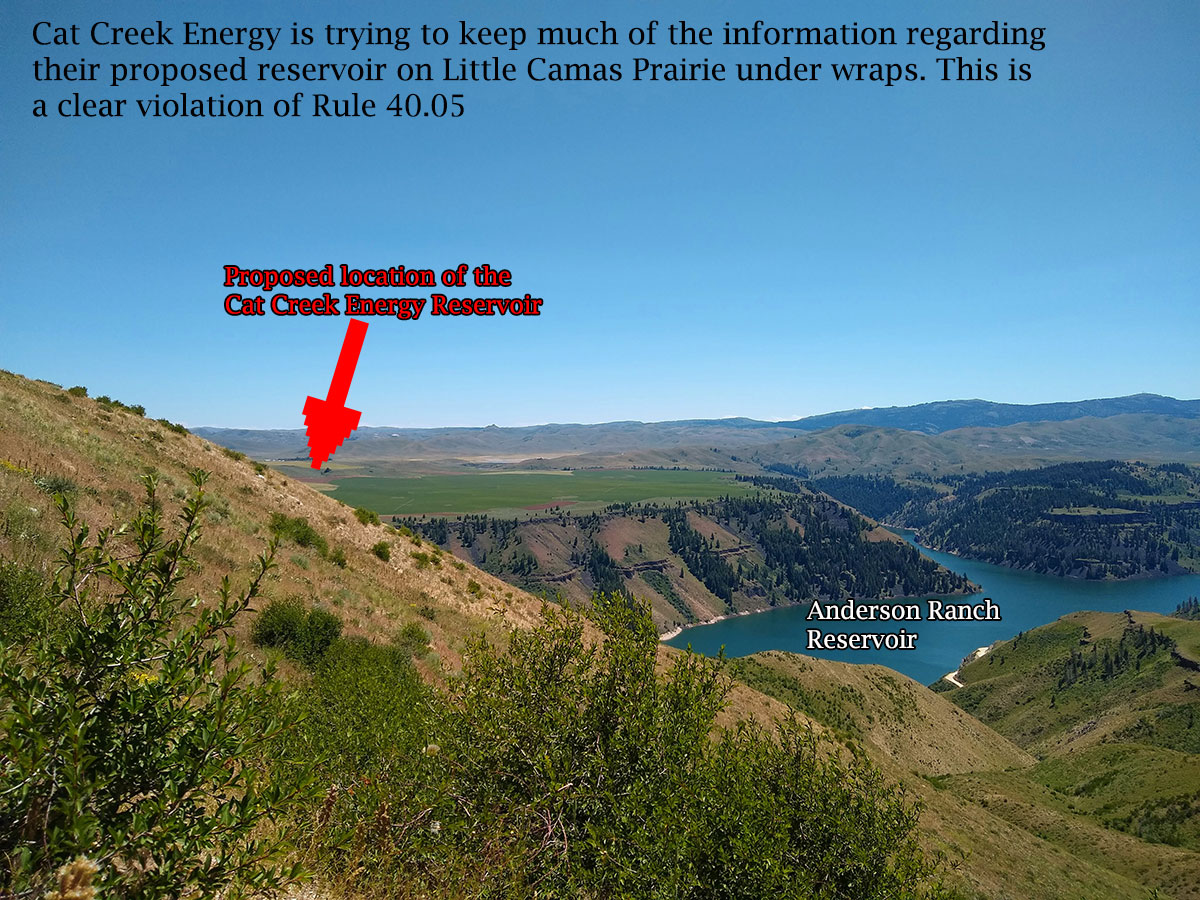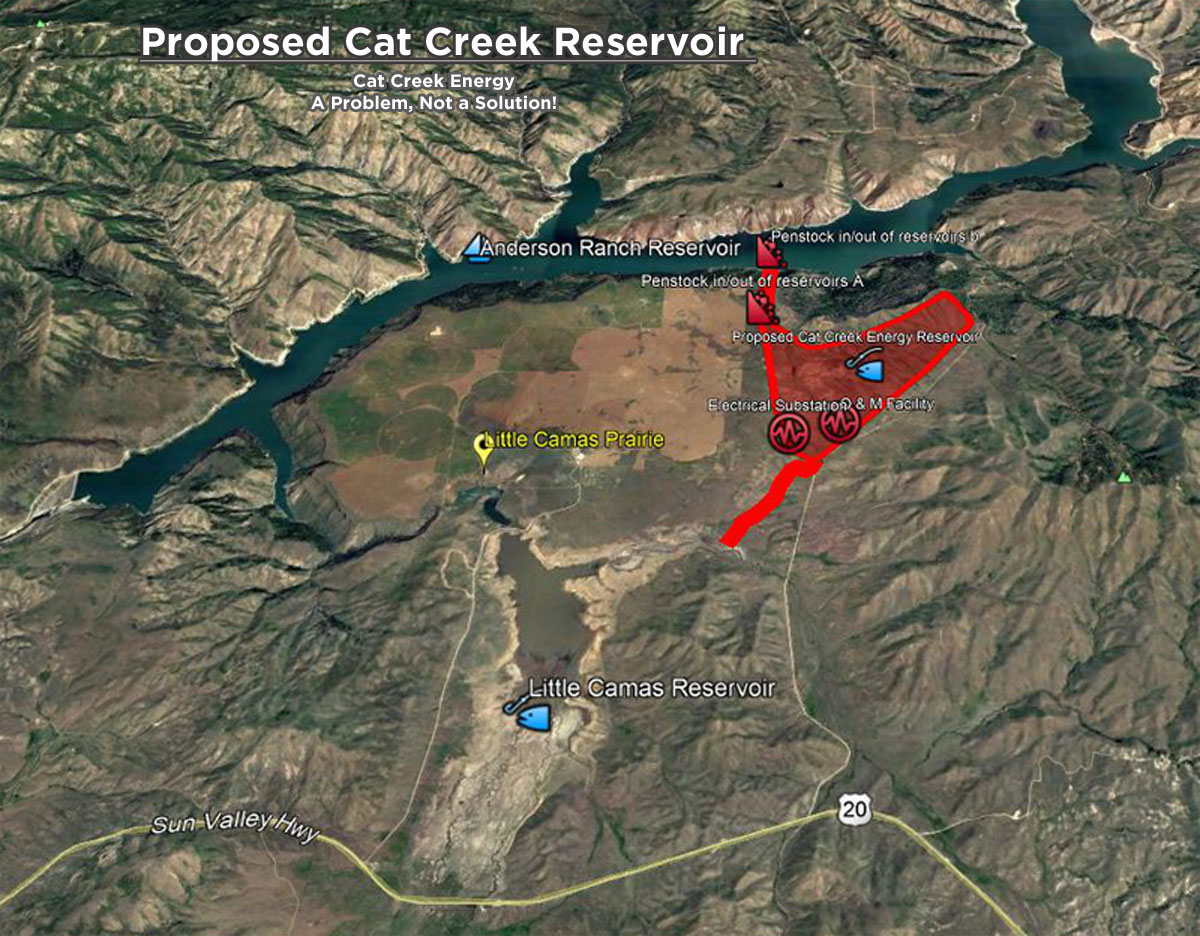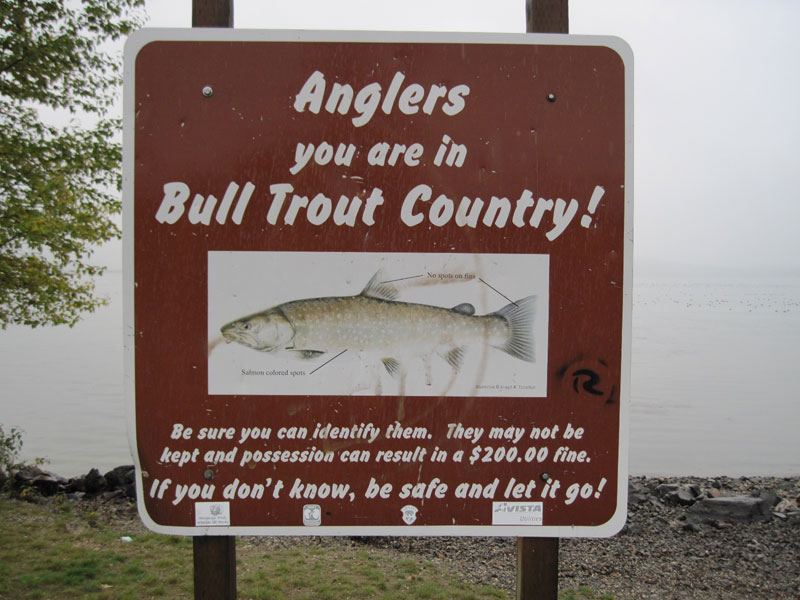
On July 14, 2020, the Director of the Idaho Department of Water Resources ruled that Cat Creek Energy must provide the citizens’ information and details regarding the large scale energy production complex in Elmore County. Since June 2020, at least four entities/individuals filed a response to Cat Creek Energy’s Motion to Protect.
In the copy/paste document below you can read what Director Spackman ruled. But in short, he said “The Director disagrees with Cat Creek. Cat Creek’s Construction Budget, Finance Process Narrative, and Itemized Accounting are not confidential, proprietary, or trade secrets. Cat Creek has the burden of showing that it is reasonably probable it can secure financing to complete the proposed project. It must show that it has sound prospects of financing.
Download the entire motion at https://catcreek-energy.com/download/1132/
###
BEFORE THE DEPARTMENT OF WATER RESOURCES
OF THE STATE OF IDAHO
IN THE MATTER OF APPLICATION FOR
PERMIT NOS. 63-34403, 63-34652, 63-34897,
AND 63-34900 IN THE NAME OF CAT
CREEK ENERGY LLC
ORDER ON MOTION FOR
PROTECTIVE ORDER
BACKGROUND
On June 10, 2020, the Director issued the Amended Order Consolidating Dockets and Parties; Order to Reorganize Applicant’s Rule 40.05 Information; Order Establishing Protective Order Procedure; Order Authorizing Discovery; Notice of Continued Prehearing Conference (“Amended Order Consolidating Dockets”) which: (1) consolidated all four pending Cat Creek Energy, LLC (“Cat Creek”) water right applications, as captioned above; (2) recognized all parties to the consolidated docket; (3) required Cat Creek to reorganize and re-index the information already submitted and posted to its ShareFile site to coincide with the statutory application criteria of Idaho Code § 42-203A and Rule 40.05 of the Department’s Water Appropriation Rules (IDAPA 37.03.08.040.05) (“Rule 40.05”); (4) required Cat Creek to file complete Rule 40.05.f information regarding financial resources, or, in the alternative, file a motion for a protective order, along with the claimed protected or confidential information, for the Director’s in camera review; (5) authorized discovery; and (6) notified parties of the July 16, 2020, additional prehearing conference.
On June 16, 2020, Cat Creek submitted the following: (1) a Motion for Protective Order (“Motion”) with attached “Appendix A: Protective Agreement”; (2) Second Declaration of James Carkulis with redacted “Appendix A: Construction Budget” (“Construction Budget”) and redacted “Appendix B: Project Finance Process Narrative” (“Finance Process Narrative”); (3) the Declaration of John L. Faulkner with redacted “Appendix A: Itemized accounting of Cat Creek’s investment (June 16, 2020)” (“Itemized Accounting”); (4) a Notice of Amended Rule 40.05 Disclosure with attached spreadsheet reflecting the ShareFile reorganization with folders to correspond to Idaho Code § 42–203A(5)(a)– (g) reflecting documents identified by name and Bates numbering; and (5) an Attorney’s Certificate Claim of Confidentiality Relating to Motion for Protective Order. On June 16, 2020, Cat Creek also submitted unredacted versions of the Second Declaration of James Carkulis, with unredacted “Appendix A: Construction Budget” and unredacted “Appendix B: Project Finance Process Narrative,” and the Declaration of John L. Faulkner, with unredacted “Appendix A: Itemized accounting of Cat Creek’s investment (June 16, 2020),” under seal to the Director.
On June 30, 2020, SBar Ranch, LLC, and The District at ParkCenter , LLC, filed its Declaration of Anthony M. Jones in Support of Sbar Ranch, LLC and The District at ParkCenter, LLC’s Response to Motion for Protective Order and Renewed Motion for Rule 40.05.b Order for Application to Submit Complete Rule 40.05 Information (“SBar Ranch and The District at ParkCenter’s Declaration and Renewed Motion”).1
On July 13, 2020, Cat Creek filed Cat Creek’s Reply Brief in Support of Motion for Protective Order (“Cat Creek Reply Brief’).2
ANALYSIS
Where an application proposes appropriation of more than twenty–five (25) cubic feet per second of water or impoundment of water in a reservoir with an active storage capacity in excess of ten thousand (10,000) acre feet, the applicant may be required to by the director . . . to furnish a statement of the financial resources of the corporation, association, firm or person making the application, and the means by which funds necessary to construct the proposed works are to be provided, and the estimated cost of construction . . . and if for the generation of power . . . the nature, location, character, capacity and estimated cost of works.
Idaho Code § 42-202(5).
Rule 40.05.f.i, further requires a current financial statement certified to show the accuracy of the information contained therein, or a financial commitment letter along with the financial statement of the lender or other evidence to show that it is reasonably probably that financing will be available to appropriate the water and apply it to the beneficial use proposed.
IDAPA 37.03.08.40.05.f.i. In addition, Rule 40.05.f.ii requires submittal of plans and specifications along with estimated construction costs for the proposed project, “definite enough to allow for determination of project impacts and implications.” IDAPA 37.03.08.40.05.f.ii. The Amended Order Consolidating Dockets ordered Cat Creek to file a comprehensive financial summary showing a reasonable probability that financing will be available to appropriate the water, including:
________
1 SBar Ranch and The District at ParkCenter’s Declaration and Renewed Motion does not bear on the Director’s decision on the Motion for Protective Order in this order. Rather, that filing will be considered as a part of the Director’s analysis related to SBar Ranch and the District at ParkCenter’s renewed Motion for Rule 40.05.b Order for Application to Submit Complete Rule 40.05 Information.
2 IDWR’s Rule of Procedure do not allow for the filing of a reply to a response to a motion. See IDAPA
37.01.01.270. Therefore, Cat Creek’s Reply Brief will not be addressed further in this order. However, as stated in footnote 1 directly above, the Director will address SBar Ranch and The District at ParkCenter’s Declaration and Renewed Motion in a separate order. Cat Creek’s Reply Brief will be addressed in that forthcoming order.
(1) “plans and specifications along with estimated construction
costs.” See Rule 40.05.f.ii. The submittal shall describe each
component of the proposed project, whether a physical component,
or a nonphysical component related to design, consultation, right of
way, contracts, permitting, etc. The submittal shall describe the
timing of the completion of each component. The applicant shall
estimate a monetary cost for each of these project components; and
(2) “a current financial statement certified to show the accuracy of
the information contained therein . . . or a financial commitment
letter . . . .” See Rule 40.05.f.i. The financial statement shall refer
back to the Rule 40.05.f.ii cost of project analysis. The financial
statement shall describe how each of the component costs will be
financed and the timing of the financing.
Amended Order Consolidating Dockets at 2-3.
Cat Creek’s Motion argued that it had already satisfied its burden under Rule 40.05, and that no further financial resources information is necessary as it had: (1) already invested over $18 million dollars; (2) secured ownership and leases of the land where the project will be constructed; (3) secured conditional use permits and a development agreement with Elmore County; (4) secured a FERC preliminary permit and a BOR preliminary lease of power privilege; (5) demonstrated a command and provided a thorough explanation of how projects of this type are typically financed; and (6) provided a detailed construction budget, project timeline, and anticipated financing sources and uses. Motion at 8–9. Cat Creek argued that it has produced sufficient information to show a reasonable probability that financing will be available to appropriate water, or, it “intends to submit at hearing ‘other evidence to show that it is reasonably probable that financing will be available.’” Motion at 3.
Cat Creek’s Motion further stated it “does not intend to submit a comprehensive financial statement or a financial commitment letter; herefore, such information is beyond the scope of this motion.” Motion at 2. Specifically, Cat Creek argued,
[t]his motion seeks to protect (i) its detailed construction budget, (ii) financing
sources and uses, and (iii) Cat Creek’s investment in the project to date. This
information is proprietary, highly confidential, and highly susceptible to
misappropriation by the protestants or others. The Department can and must
maintain the integrity of the Department proceedings by preserving the
confidentiality of such information.
Id.
Cat Creek argued the unredacted versions of its Construction Budget, the Finance Process Narrative, and the Itemized Accounting qualify for confidential treatment because: (1) Cat Creek has treated the information therein as confidential and expended great effort to maintain that confidentiality; (2) the information was developed at substantial cost; (3) the information has independent economic value; and (4) the information is highly susceptible to misappropriation by competitors. Id. Cat Creek argued the records derive independent economic value from not being generally known to the public or competitors of Cat Creek, and therefore, qualify as trade secrets under the Idaho Trade Secrets Act. Id.
The Director disagrees with Cat Creek. Cat Creek’s Construction Budget, Finance Process Narrative, and Itemized Accounting are not confidential, proprietary, or trade secrets.
Cat Creek has the burden of showing that it is reasonably probable it can secure financing to complete the proposed project. It must show that it has sound prospects3 of financing. It may satisfy this burden by: (a) furnishing a statement of its financial resources; (b) estimating the cost of construction and hydropower works and establishing the means by which funds necessary to construct the proposed works will be secured; (c) a current, certified financial statement; (d) a financial commitment letter along with the financial statement of the lender; or (e) other evidence to show that it is reasonably probable that financing will be available to appropriate and beneficially use the water. Idaho Code § 42–202(5); IDAPA 37.03.08.40.05.f.i and ii.
The Construction Budget Cat Creek submitted is not confidential or a trade secret. It is the estimated costs of construction and hydropower works. It is a description of the costs associated with Cat Creek’s already disclosed general facility plans. It is not actual costs, nor is it part of a proprietary program or formula that might give Cat Creek some competitive advantage. It is a generic list of estimated construction costs. The unredacted Construction Budget should be disclosed to the parties.
The Finance Process Narrative is not confidential, proprietary, or a trade secret. It is a general, generic, overarching description of how Cat Creek—how any private actor—may decide to proceed with an energy project, and how it might pay for the project if it remains viable through its sustainability and viability phases. The name of the document is telling: “Financing Parameters of a Major Infrastructure Project When Owned by a Private Entity”, with the following tagline: “There are specific milestones in financing for an energy project. They are universal to all project development.” It contains a general description of Cat Creek’s potential contracting and permitting processes, a generic description of potential generalized sources of grants and equity investment categories, a general description of the potential use of term debt, and a description of why certain information that may be submitted to the Director should remain confidential. The document itself is not confidential, proprietary or a trade secret. Arguably, some of what could be developed by Cat Creek as a result of what the document describes could be considered confidential. However, nothing more than the Finance Process Narrative was submitted. The unredacted Finance Process Narrative should be disclosed to the parties.
The Itemized Accounting is not confidential, proprietary, or a trade secret. It shows an investment of $18,506,581.73 in the project to date. The categories are vague, general, and
3 See Shokal v. Dunn , 109 Idaho 330, 336, 707 P.2d 441, 447 (Idaho 1985). There, the Idaho Supreme Court concluded: “The ‘reasonably probable’ standard used by [IDWR] shifts the risk of failure and shows that the state is more willing to take a risk by providing individuals with the opportunity to put water to beneficial use. It indicates a willingness on the part of the state to take a chance that a proposed water use with sound prospects of financing [emphasis added] will become a successful venture, thereby benefiting both the water user and the state.”
generic and cannot be protected from disclosure. Further, the extent of Cat Creek’s own investment is a strong factor in the Director’s consideration of whether the project has a reasonable probability of success and should be disclosed to the parties. See Shokal v. Dunn at 336, 447.
Finally, the Declaration of John L. Faulkner, which the Itemized Accounting is attached to, states: “It does not make sense to me that this type of personal information must be disclosed in order to obtain a water right.” Idaho law, through Idaho Code § 42–202(5) and Rule 40.05.f, require a showing that it is reasonably probable that Cat Creek will obtain the financing to complete the project. However an applicant business entity is structured or associated—through the use of personal accounts and financing or business accounts and financing—has no bearing on the applicant’s ability to meet its burden of showing to a reasonable probability that it will have sufficient financial resources to complete the project. The purpose of this requirement “[is] clearly intended to prevent the tying up of [Idaho’s] water resources by persons unable to complete a project because of financial limitations. [ . . . ] The legislature has provided [IDWR] with the authority to weed out the financially insufficient applications.” Shokal v. Dunn at 336, 447. These financial resources disclosures are required.
The Motion for Protective Order is denied as Cat Creek has submitted nothing deserving confidential treatment and protection at this time.
ORDER
IT IS HEREBY ORDERED that Cat Creek Energy, LLC’s Motion for Protective Order is DENIED.
IT IS FURTHER ORDERED that Cat Creek Energy, LLC shall disclose and place on its ShareFile site the unredacted version of the Second Declaration of James Carkulis and “Appendix A: Construction Budget” and “Appendix B: Project Finance Process Narrative,” and the unredacted version of the Declaration of John L. Faulkner and “Appendix A: Itemized accounting of Cat Creek’s investment (June 16, 2020).”
DATED on this 14th day of July, 2020
~ Signed ~
Gary Spackman
Director
###
There are many people in the Elmore County area that have been fighting the Cat Creek Energy project for the past 5 years. The people have done their due diligence and research and have discovered the proposed energy project won’t be good for hunters, fishers, outdoor enthusiasts or the deer, elk, pronghorn, and games birds that call this area home. Even worse, the water resources from Anderson Ranch Reservoir and the South Fork of the Boise River that Cat Creek Energy are trying to capture certain won’t help the people of Elmore County.
Download the
Document - Water Resources Wants More Info From Cat Creek Energy
here.
Thanks.
